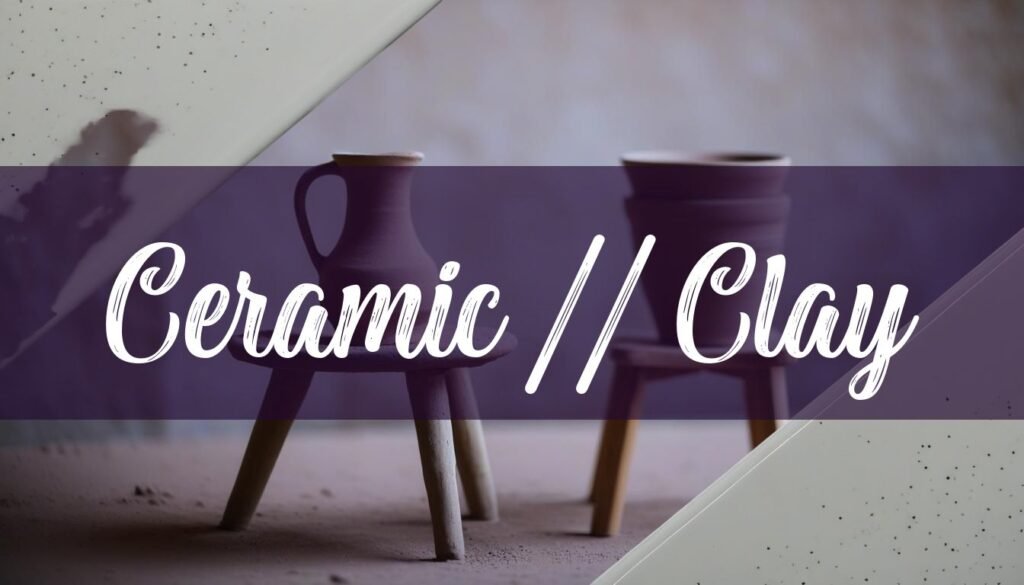Ceramic clay is the foundation of pottery, sculpture, and various other ceramic arts. Understanding its composition is essential for anyone venturing into this craft, whether as a beginner or a seasoned ceramicist. The type of clay used significantly impacts the final product’s properties, including its plasticity, firing temperature, durability, and appearance. Fundamentally, ceramic clay is composed of minerals and organic materials, meticulously mixed to achieve a workable consistency. These materials typically include alumina (Al₂O₃), silica (SiO₂), and chemically bound water (H₂O). Different types of ceramic clays, such as earthenware, stoneware, and porcelain, each have unique formulations tailored to their specific applications and firing requirements. The blending of clay, silica, alumina, and other elements determines the clay’s melting temperature and thermal expansion, highlighting the importance of precise formulations.
Earthenware Clay Composition
Earthenware is one of the oldest and most commonly used types of ceramic clay. It is known for its high plasticity, making it easy to manipulate and work with. The primary ingredients in earthenware clay include kaolinite (hydrous aluminum silicate), feldspar (used as a flux), calcium carbonate (a filler to reduce fired shrinkage), and quartz (silica). Its composition often includes iron and other mineral impurities, which contribute to its distinctive properties and color. Earthenware is fired at lower temperatures, typically between 950°C and 1,100°C (1,745°F and 2,012°F), resulting in a more porous and less durable final product compared to stoneware or porcelain. Due to its porosity, earthenware is commonly used for flowerpots and other items that benefit from some level of moisture absorption. It can also be glazed to create waterproof vessels for holding liquids and foodstuffs. The ease of use and vibrant color possibilities make earthenware a favorite among beginner potters.
Stoneware and Porcelain Clay Composition
Stoneware is another popular type of clay, known for its durability and versatility. Like earthenware, stoneware contains kaolinite (aluminum silicate), feldspar (used as a flux), and quartz (silica). Other clay minerals, such as bentonite, iron impurities, and small quantities of mica, illite, and smectite, are often added to enhance its properties. Stoneware clays typically appear white or grey when water is added. The firing range for stoneware is much higher than earthenware, typically between 1,000°C and 1,380°C, which results in a stone-like, durable product. This makes stoneware ideal for functional ware like dinner plates, vases, bakeware, cookware, tiles, and flooring.
Porcelain, often considered the most refined type of ceramic clay, is composed primarily of pure kaolin (kaolinite), ball clay, feldspar (used as a flux), and quartz (silica). The high proportion of kaolin gives porcelain its characteristic white color and translucency. Bone china, a type of porcelain, is made mainly of pure kaolin (kaolinite), bone ash (animal bones), and quartz (silica). Porcelain is fired at high temperatures, typically between 2,200°F and 2,600°F, which vitrifies the clay, making it non-porous and very hard. It is commonly used for dinnerware, figurines, sculptures, tiles, sinks, basins, and architectural items. If you are interested in learning how to make it, this guide on how to make stoneware is a great place to start. You might also want to learn what type of clay is used for ceramics.
Additives and Their Roles
In addition to the basic clay minerals, various additives can be incorporated into ceramic clay to modify its properties and enhance its workability. Ball clay, composed of kaolinite, mica, and quartz, is often added to increase plasticity and workability. It may also contain mineral impurities that make it ideal for blending with other clay bodies. Fire clay, another essential additive, has a high aluminum oxide content and can withstand extremely high temperatures, making it perfect for products requiring heat resistance. It also contains a significant amount of silica. Other additives, such as grog (pre-fired clay particles) or organic matter, can be introduced to improve workability, reduce shrinkage, and add texture.
Glazes, typically composed of silica, alumina, and various fluxes, are also crucial for creating a protective and decorative coating on the ceramic surface. Transition metal oxides are often included in glazes to impart color. Understanding how these materials interact and influence the final product is fundamental to mastering the art of ceramics.





